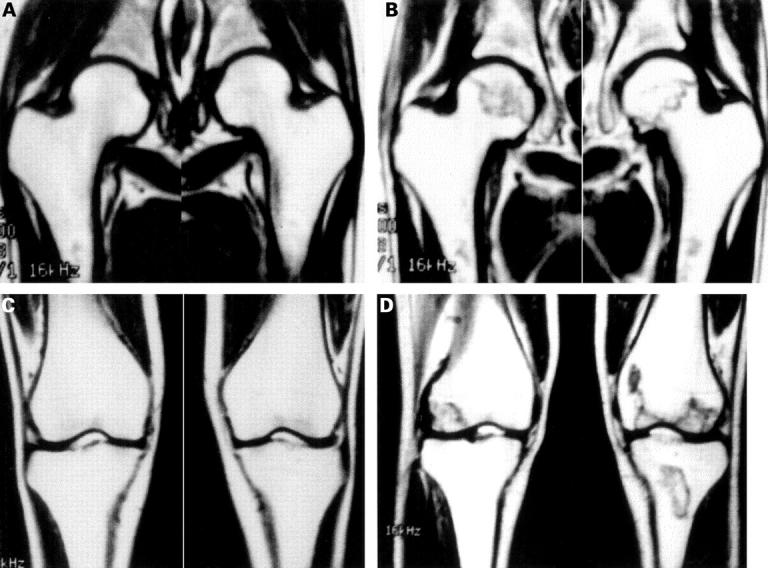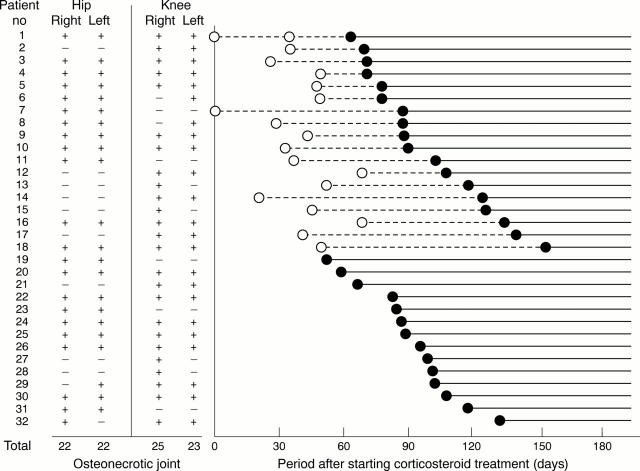Osteonecrosis in patients with systemic lupus erythematosus develops very early after starting high dose corticosteroid treatment (original) (raw)
Abstract
_OBJECTIVES_—To investigate the actual time of onset of osteonecrosis (ON) after high dose corticosteroid treatment in systemic lupus erythematosus (SLE). _METHODS_—72 patients with active SLE, who received high dose corticosteroid for the first time, for the development of ON at hips and knees were monitored by magnetic resonance imaging for at least 12 months. _RESULTS_—ON lesions were detected in 32/72 patients (44%) between one and five months (3.1 months on average) after starting high dose corticosteroid treatment. No osteonecrotic lesion was newly detected from the sixth month of treatment until the end of the follow up period. _CONCLUSION_—The findings suggested that the actual time of onset of ON in SLE is within the first month of high dose corticosteroid treatment.
Full Text
The Full Text of this article is available as a PDF (145.8 KB).
Figure 1 .
Distribution and detection time of osteonecrosis by magnetic resonance imaging from the start of high dose corticosteroid treatment in 32 patients. Open circle = normal finding; filled circle = abnormal finding. All these abnormalities were well demarcated, band-like zones of decreased signal intensity on T1 weighted, spin echo images and of increased signal intensity on STIR images.
Figure 2 .

Patient 1. A 26 year old woman with systemic lupus erythematosus. One month after the administration of high dose corticosteroid, both the T1 weighted, spin echo (SE) image of the hips (A) and that of the knees (C) showed no abnormal findings. Two months after the administration of high dose corticosteroid, both the T1 weighted, SE images of the hips (B) and of the knees (D) showed band-like zone of decreased signal intensity. She had no symptoms in her hips or knees.
